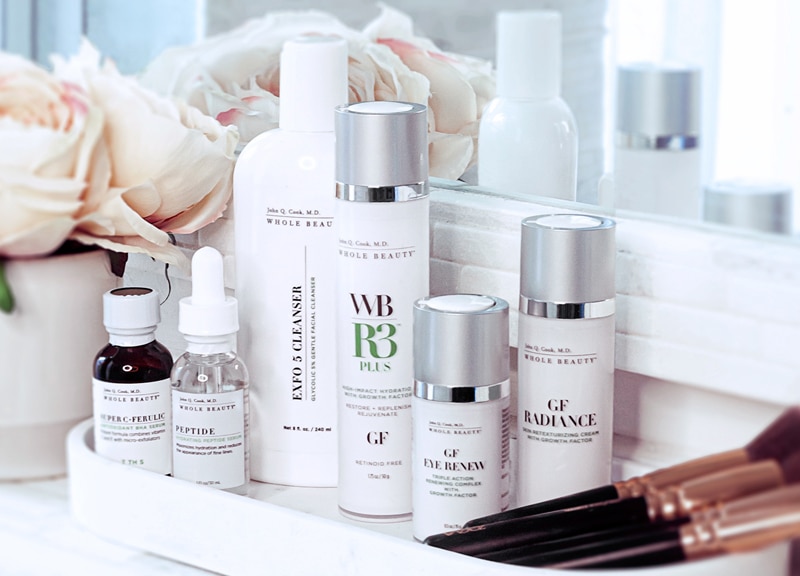Why Dr. John Q. Cook Is the Right Body Surgeon for You
Education and Credentials

Awards and Recognition

REAL PATIENT RESULTS
See the difference experience makes. Scroll through before and afters in the photo carousel of liposuction patients treated by Dr. Cook and his team.
Liposuction
Sculpt the Body Contours You Want with Sophisticated Surgical Fat Reduction in Chicago and Winnetka
Dr. John Q. Cook is thoroughly experienced in the many surgical and non-surgical forms of body contouring available, including liposuction. At his Chicago-area practice, the Whole Beauty® Institute, he consults with patients pursuing surgical fat reduction in order to achieve slimmer contours, explaining the details that define the many techniques available to them. Dr. Cook will work with each unique patient to determine the ideal approach. No two patients get the same exact procedure, because no two patients are alike.
Many patients ultimately opt for liposuction, which involves the physical removal of fat cells from areas where they congregate in abundance. Even within the category of liposuction, there are many variations. Dr. Cook’s goal is to pair patient and procedure in ways that maximize the beautiful and natural-looking results. This all starts with a personalized consultation, which is a vital component in any patient’s body contouring journey.
What Are the Different Liposuction Techniques Available at Chicago’s Whole Beauty® Institute?
Before opting to undergo fat reduction surgery, it is always best to initially address the zones of excess fat with a lifestyle-focused strategy that incorporates an exercise and nutrition plan that works for you. This may be all you need to lose the unwanted volume.
Commonly, however, that unwanted fat will remain, which prompts inquiries into surgical options. Still, anyone who makes these lifestyle shifts will have laid the groundwork for long-term success—especially if they seek treatment for stubborn excess fat in the future.
The fat reduction and body contouring options available at The Whole Beauty® Institute include classical liposuction, Vaser® lipoplasty, fat grafting, Evolve®, laser lipoplasty, and radiofrequency fat reduction and body tightening.
At the core of the Whole Beauty® Institute’s patient care is an individualized approach for each person who comes to our offices in Winnetka and Chicago for liposuction. This involves an in-depth liposuction consultation that includes an evaluation of the patient’s lifestyle and patterns of activity, general health, and expectations for the results of the surgery.
Before a patients decides on liposuction (or any procedure or treatment), we will also analyze the different layers of your body—including bone, muscle, and fat—as well as skin tone and fat distribution. The consultation will also involve education on the typical outcomes to expect for your body shape.

Contact Whole Beauty® Institute in Chicago or Winnetka for more information about liposuction cost, recovery, and other details. Call 312-751-2112 or send a message online.
Request a consultWhat Makes Fat So Stubborn for Some People?
How a person gains and stores fat is largely determined by their genetics, but also in part by their diet and exercise habits. Those who are very lucky find that the fat they gain will be distributed throughout the body in a uniform way. Much more commonly, however, the fat will “settle” in specific areas, such as the abdomen in men and the hips and outer thighs in women.
The way a body accumulates excess fat in one or more specific areas is called “lipodystrophy.” Successful lifestyle changes—such as reducing calorie intake and increasing routine physical activity—can be successful in slimming these areas down, but even these health-improving efforts have limitations.
It is impossible to specifically target lipodystrophy zones, since some pockets of fat cells will stubbornly resist the effects of both diet and exercise.
It is also important to know that areas where a reduction does occur are not actually losing fat cells. With any lifestyle-driven reduction in weight and change in body contours, the number of fat cells stays the same. Each cell simply grows smaller. What goes down, however, can go back up! In the future, these fat cells can grow larger again, creating an unwanted bulge or bulk once more.
Liposuction addresses both of these limitations, allowing Dr. Cook to take a targeted approach that physically removes fat cells from specifically chosen areas.
How Did the Liposuction Techniques Dr. Cook Uses Develop?
If you lived prior to the 1970s and had unwanted excess fat, your only option beyond lifestyle changes was surgery that involved long incisions and direct removal of the excess fat. The only areas where this approached worked to some degree were the abdomen (as with a tummy tuck) and the breasts (breast reduction). Fat could technically be removed from other regions, but the highly noticeable scars were an unwelcome trade off, and it was hard for plastic surgeons to remove the fat in a manner that left a pleasing contour.
Classical Liposuction Technique
This description is a bit inelegant—but that is exactly what early liposuction was like! The early devices were crude and allowed the plastic surgeon to make little distinction between fat and other tissue or structures, such as nerve and blood vessels. That meant patients experienced no small amount of trauma throughout the procedure. Post-liposuction recovery was often long and painful for patients, who found that their bruises could last for months.
How Was Classical Liposuction Refined?
With tumescent liposuction, the plastic surgeon introduces a special solution—made up of sterile salt water, a local anesthetic, and a bool vessel-constricting agent—into the area to be treated. The resulting effects make the fat easier to extract and quite dramatically cut down on post-liposuction bruising. The technique also makes working with more sophisticated and smaller-diameter cannulas to extract the fat an easier prospect. This, in turn, leads to a “smoother” result—at least in the hands of a skilled liposuction surgeon.
As the fat-reduction results became more natural-looking and consistent while recovery also became easier, the popularity of liposuction exploded among patients around the United States and beyond.
Ultrasonic Liposuction and Vaser Lipoplasty: The Next Advancements
Dr. Zocchi realized that his discovery might mean ultrasound was a useful technology to apply to the practice of liposuction. Thus, he developed a technique that capitalized on ultrasound’s many possibilities. As with any potentially disruptive technology, responses to the development were mixed. when Dr. Zocchi began to present his work at American meetings. It seems that when something new becomes available, plastic surgeons tend to divide themselves into what Dr. Cook considers to be three primary groups: the fat and happy, the intellectually curious, and the eager early adopters.
The “fat and happy” surgeons using classical liposuction enjoyed very busy practices—and perhaps didn’t really want to be much busier. Some of them viewed the introduction of a potentially disruptive technology with annoyance and often disparaged it.
The “eager early adopters” were mostly young plastic surgeons who were not far away from completing their training and who were looking for something they could use to distinguish themselves from surgeons who were more established in the profession. This younger wave was open-minded to new possibilities in liposuction, but perhaps a little too eager to jump on the next bandwagon without doing the necessary homework.
Fortunately for the profession, professional organizations at the time had a sufficient number of the third group: the “intellectually curious.” These open but measured plastic surgeons made a concerted effort to work with the FDA in order to evaluate the new liposuction technology and introduce it to surgeons with the proper qualifications.
The net effect of this process was to introduce ultrasonic liposuction in a highly structured way to board-certified plastic surgeons. Some of them chose to adopt the technology, while others did not.
The doctors who adopted the technology tended to see relatively few complications—especially since the surgeons who chose to use the ultrasonic lipoplasty were properly credentialed and already experienced in the realm of surgical fat reduction. Still, to this day, there are surgeons who prefer classical liposuction because of its simplicity. Others, like Dr. Cook, feel that various forms of ultrasonic liposuction impart a surgical fat-reduction advantage, especially when targeting certain zones on the body.
Ultrasonic liposuction has evolved since its introduction and has reached a level of sophistication that makes it a “workhorse” for many busy plastic surgeons. In Dr. Cook’s opinion, Vaser® lipoplasty is the most advanced form of ultrasonic liposuction widely available in the United States. He has used this technology with a very high level of success to help more than 1,000 patients enjoy slimmer contours. The character of the ultrasound can be varied in ways that allow for a very specific approach to different zones of fat. With a highly experienced surgeon, there may be a moderate degree of skin and tissue tightening in the treated area, but not to the degree possible from laser lipoplasty.
Power Assisted Lipectomy (PAL)
Laser Liposuction, SmartLipo, and SlimLipo
A tumescent solution is first introduced in order to prepare the area for treatment. Next, energy is applied to disrupt the unwanted fat cells. Finally, the “melted” fat is suctioned out.
The two most important distinguishing characteristics of laser liposuction are its ease of application when the patient is under local anesthesia and the tightening effect that occurs after using this technology.
Dr. Cook has worked extensively with both laser liposuction technologies: SmartLipo® and SlimLipo®. The Whole Beauty® Institute’s patients appreciate the convenience of the office-based procedure under local anesthesia with a limited recovery. They also benefit from Dr. Cook’s extensive experience and artistic vision.
Radiofrequency Fat Reduction and Tightening
A Closer Look at Ultrasonic Lipoplasty, Laser Liposuction, and Non-Surgical Fat Reduction
Ultrasonic Lipoplasty
Some patients have several relatively generous zones of excess fat and want all of it removed during a single liposuction surgery session. A typical example in a female patient might be someone with excess fat in the hips, flanks, abdomen, outer thighs, inner thighs, and knees. A typical example in a male patient might be excess in the hips, flanks, and abdomen.
The efficiency of Vaser® ultrasonic lipoplasty—especially when performed at a premium-quality surgicenter near our Chicago office—serves these patients well. The ultrasonic liposuction technique will be carried out with the patient under a light general anesthetic or intravenous sedation. Most patients will recover at home, but they can also recover at a luxury hotel in the same building as the surgicenter.
Some patients have relatively small zones of excess fat and prefer to avoid any form of anesthesia—other than a local anesthetic. These patients will be delighted to learn that we offer the SmartLipo® laser lipoplasty technique and Dr. Cook can perform their surgery using nothing more than local anesthesia in both our Chicago and Winnetka offices.
If there are several zones of fat that need to be treated, it is usually possible to schedule two or three laser liposuction procedures with a short “break” between each treatment session.
Laser Liposuction
Laser liposuction, also known as laser lipoplasty, is the most recent technique that plastic surgeons have adopted to remove excess fat from problem areas of the body. Plastic surgeons who use this particular technique follow a sequence of three steps:
First, the surgeon injects a fluid that contains local anesthetic into the area targeted for sculpting. After waiting for the local anesthesia to take effect, the liposuction surgeon then inserts a tiny tube beneath the skin to deliver laser energy to the treatment zone. Finally, the surgeon uses another tiny tube to remove the fat that has been “melted” by the laser energy, which provides two primary effects.
The first benefit is the breakdown of unwanted fat cells. There are numerous online videos that show this process and make for a dramatic viewing experience. The second benefit is tightening. If applied with skill, the laser energy can help tissue to contract in the zones treated by the liposuction surgeon. This can be particularly helpful in the arms and neck.
A particular advantage of laser liposuction is timing. Other forms of liposuction require a longer period of recovery, and patients find it necessary to wear elastic support garments for many weeks after their procedure. Laser SmartLipo® requires a much shorter period of wearing support garments and staying away from heavy exercise when compared to other liposuction techniques. Less “down time” means patients can fit the procedure more easily into their busy schedule—even during the summer months, when travel is common.
Patient Testimonials with Laser Liposuction
In these videos below, patients share their experience with Laser Liposuction.
FAQs about Laser Liposuction (SmartLipo®)
What Are Laser Liposuction’s Main Advantages?
- Laser liposuction can be carried out with the patient under local anesthesia in the office.
- Anesthesiologist and surgicenter fees can be avoided, making the approach more cost-effective.
- The procedure is less traumatic than other liposuction techniques, so the overall patient experience is much better.
- Because the procedure is less traumatic, recovery is much quicker and easier than with other liposuction techniques.
- Most patients can return to work within one to two days of their treatment.
- The surgical incisions are a little smaller than required for most alternative liposuction techniques.
- There is actually some tissue tightening that occurs with this procedure, making it well suited for necks and arms.
What Is the Patient Experience like with Laser Liposuction?
When you arrive at our office for the procedure, you will be given medications that gently relax you. Dr. Cook will then mark the areas you previously discussed at your consultation. With that, you will be ready for the actual liposuction procedure.
In the operating room, Dr. Cook will inject a local anesthetic, then make tiny incisions for the treatment once sensation has dulled in the target area. He then gently introduces the fluid that prepares the zone for surgery.
After a period of relaxation, Dr. Cook will apply the laser energy to the area of excess fat, and then extract the fat from the treated zone.
During the laser liposuction procedure, you can listen to whatever favorite music you bring—or feel free to just “zone out.” Before you know it, the procedure will be finished.
The Whole Beauty® Institute team will help you into your post-surgical garment. You will feel a little stiff in the area where you were treated, but you will be able to move comfortably and calmly.
What Is Recovery Like After Laser Lipoplasty?
You can participate in normal light activities shortly after your laser liposuction surgery, but you should avoid heavy exercise until cleared to resume it by Dr. Cross and his team. Most patients can return to work within two days of their surgical fat removal.
What Is the Most Important Factor for Success with Laser Liposuction?
With this in mind, be aware! Since laser liposuction can be carried out so neatly in an office setting, it is possible for a clinician with little surgical training to obtain the technology and begin treating patients. Even though this is technically possible, the results can be disastrous!
Given the relative ease of the technique, Dr. Cook initially developed a negative impression of laser liposuction—driven by the awful results he saw in patients who came to him for help after they chose to visit a “medispa” for their procedure. The liposuction before-and-after results were truly horrible.
In fact, Dr. Cook might to this day be avoiding the technique had he not seen first-hand how wonderful the liposuction technique can be in skilled hands. One of the plastic surgeons he trained for a plastic surgery residency at Rush University Medical Center, Dr. Spero Theodorou, invited him to visit New York City and see the technique in action. Dr. Cook found Dr. Theodorou’s results to be excellent, and he saw that the overall patient experience was superior when compared to other forms of liposuction.
At that point, Dr. Cook realized that the bad results he had been seeing were not due to the technology that makes laser liposuction possible, but were instead a direct result of the lack of training in the people who performed the procedures. In other words, an poorly credentialed and untrained practitioner will wreak havoc with any type of liposuction, whether it be classical, ultrasound, or laser.
Dr. Cook implores anyone considering fat reduction and body contouring to look for a highly experienced surgeon who can show proper credentials. A good way to kick off such a search is to see if the person providing liposuction is certified by the American Board of Plastic Surgery.
Why Does Laser Liposuction Work so Well With Local Anesthesia?
Laser liposuction is the first liposuction technique that Dr. Cook feels works well with the patient under local anesthesia in an office setting. He has extensively worked with the breadth and depth of previous liposuction techniques—including classical liposuction and Vaser® lipoplasty—and has found them to be frustrating and uncomfortable for the patient when he has utilized them with local anesthesia. The bulk of the liposuction procedures he has performed via these techniques were carried out in the surgical center with the patient under deep sedation or general anesthesia.
With laser liposuction, however, the patient experience is fundamentally different. Patients simply experience much less discomfort when the fat is melted via the laser lipolysis technique than when it is mechanically broken apart by a cannula via classical liposuction or treated with various forms of ultrasonic liposuction.
Know that, with all types of liposuction—including laser techniques—not everyone is suited to a local anesthetic. Some patients who are fearful of the medical environment may do best under IV sedation or a light general anesthetic. All of this can be discussed at an initial consultation.
What Is the Difference Between Different Lipolysis Techniques?
Why Do Patients Better Tolerate Laser Lipo Under Local Anesthesia?
Whatever the explanation, the fact remains that laser liposuction enables the surgeon to treat a wide variety of patients using nothing more than local anesthesia in the comfort of an office setting.
Can Laser Liposuction Be Used Specifically on the Arms?
At the Whole Beauty® Institute, our patients considering brachioplasty have been delighted with laser liposuction as a technique for achieving slimmer-looking arms. This technique yields a higher degree of skin tightening and allows for many new possibilities when it comes to treating excessive fatty deposits in the area.
As Dr. Cook puts it, laser liposuction has truly been a game changer for the arms. This is because the treatment delivers two wavelengths of laser energy, which melt the unwanted fat cells and also tighten the supporting structures of the arm. Other advantages of this treatment include the application of local anesthesia, small incisions that leave less-noticeable scars, shorter time spent in a supportive garment when compared to other techniques, and a faster recovery and quicker return to typical daily activities. See why this procedure has become so popular in such a short amount of time?
What Non-Surgical Fat Reduction Techniques Are Available?
In recent years, multiple non-invasive fat reduction techniques have been introduced to the U.S. market, and it seems like more are always on the way. These devices use various strategies—including heat, cold, radiofrequency, and other forms of energy—to reduce stubborn fat deposits throughout the body. Some of these technologies can admittedly produce a modest reduction of fat in the treated zones, but Dr. Cook has never seen them yield results equal to what can be accomplished with any form of surgical liposuction, whether classical, ultrasonic, or laser.
That said, some patients are looking for the modest effects that come from a non-surgical approach. For nonsurgical fat reduction, Whole Beauty® Institute offers Evolve® Trim, Tite, and Tone technology.
Non-Surgical Fat Reduction
In the last few years, several non-invasive techniques of fat reduction have been introduced to the American market—and more are on the way. These devices use heat, cold, radiofrequency, and other forms of energy to reduce fat deposits in the body. Some of these technologies will produce a modest reduction in treated zones, but Dr. Cook has never seen results that equal what can be accomplished with any form of liposuction: classical, ultrasonic, or laser.
For nonsurgical fat reduction, we make use of the Evolve® Trim, Tite, and Tone technology.
Liposuction Questions and Answers with Dr. John Q. Cook
According to statistics from the American Society for Aesthetic Plastic Surgery, liposuction is one of the most common cosmetic procedures performed in the United States. Why do you think this is the case?
Now, many of my patients deliver babies, and the first question out of their mouth is “when can I get back to the gym to work out?” Even the casual dress movement has probably contributed to this especially for men in the work environment, since they can’t hide all that extra fat as well. Obviously, I am being a little light-hearted in my description here, but we really have witnessed what I view as a wonderful trend in our society where people view exercise as an important part of their lives and keep up with it well into their 70s and 80s and beyond. The benefits of this are obvious. People are healthier, sleep better, and have more energy but we probably also get a little pickier about our appearance when we invest so much energy in it. As you push the exercise to a certain point, depending upon your genetic make-up, you may find that despite everything you do, there are certain zones that are quite simply resistant to diet and exercise. This is where liposuction can be helpful.
Could you describe for me your ideal patient?
An ideal liposuction candidate would be someone who exercises regularly, is careful about diet, and has not experienced major weight fluctuations. They are close to their ideal body weight. Despite these measures, they have certain zones of fat that have been resistant to diet and exercise, and the skin tone in these areas is excellent. Their goal is to improve the visual harmony of the body, as well as to improve the fit of clothes across certain zones of the body. Of course, the person should be in excellent health.
Obviously, someone who falls into this ideal category is likely to get an ideal result. I don’t mean to imply that I don’t operate on anyone outside of this category, but it is just that as we move further away from this ideal, clear and accurate communication between the doctor and patients becomes very important to achieve the best possible liposuction results.
Is there an age limit for liposuction surgery?
I do not have arbitrary age limits. When I am evaluating a liposuction candidate, I am looking at the patient’s goals, the quality of the patient’s skin tone, and the patients’ general health. There are patients in their 20s who I turn down for liposuction surgery, and there are some in their 60s who are acceptable candidates. It all comes down to a matter of individualized assessment.
What happens if you perform liposuction outside of these areas?
In general, when you perform fat-reduction surgery outside of the classical zones where the fat is organized in a different way, it is much more likely that there will be undesirable surgical consequences, such as diminished skin tone or surface irregularities. I am not saying that I never perform surgery outside of the classic zones, but it is just that doctors who do so have to very carefully evaluate each patient. In the classic zones, we will often perform what I refer to as finesse liposuction. This is in an individual who is already in very good shape, for whom a relatively minor adjustment of contour may be done to further improve the artistic lines of the body. It would be a mistake to perform this type of surgery outside of the classic zones, because the risk/benefit ratio would not be in the patients’ favor.
Read more Liposuction Q&A with Dr. John Q. Cook
Are there any other things that you look for in a patient in order to predict the success of liposuction surgery?
Yes. When I look at my patient, I always have in the back of my mind what I refer to as the four keys. The first is a classic zone of fat distribution with the rest of the body in relatively good shape. This is the one we have already talked about. The other important criteria are that the skin tone should be acceptable, that the patient should be in good health without significant medical problems, and that the patient’s expectations should be realistic relative to what contemporary liposuction techniques can offer.
Are there any other things that you look for in evaluating a liposuction patient?
I believe that the holistic approach for the patient seeking liposuction or any body contouring surgery is absolutely essential. You can’t separate a surgical procedure from the context of a patient’s lifestyle and activities if you are truly interested in providing a good long-term outcome for your patient. A patient may appear to be a good physical candidate for the procedure, but if you find out that this is the type of patient who really doesn’t have a good exercise program and is constantly cycling up and down in their weight, there is a very high probability that the result will be mediocre. It makes me sad when I see patients who haven’t been dealt with honestly in this regard—where they have been promised some sort of a quick fix, and no one has taken the time to try to figure out whether their lifestyle is an appropriate balance for liposuction surgery. The patient’s interest should always be put first, even if that means telling the patient no.
You mentioned that liposuction has gone through a process of technical refinement. Could you describe this a little more for me?
I have very much enjoyed witnessing and participating in the evolution of body contouring surgery. When liposuction was introduced to this country in the mid ’80s, it was relatively crude. Nonetheless, it represented a significant advance over the only other option that was available at the time. Previous body contouring surgery techniques resulted in very long scars in common locations, and this was unacceptable for most people in the United States. The great advance in liposuction came when doctors realized that fat could be extracted through relatively small incisions, using long hollow tubes called cannulas. The first liposuctions resulted in significant bleeding and bruising, and the amount of fat that could be removed safely in a single session was quite limited. There were also problems with the finished details of the work, since the initial cannulas used for liposuction were very large and tended to produce irregularities. We then entered into a refinement phase, as people began to design the cannulas smaller and with different tip configurations, so that there was more finesse in the liposuction procedure.
The next big liposuction advance came in the early ’90s, when it became widely appreciated that there was an advantage to introducing fluid into the area of liposuction prior to the fat extraction. This fluid, which is the same solution used in an IV, was mixed with a local anesthetic and a vasoconstrictor know as epinephrine. To those of us who were working with this liposuction technique at the time, the advantages of this advancement were very apparent. I found that the fat came out more easily and more uniformly. There was also much less bruising and blood loss, so that it become possible to contour several zones at the same time.
By the mid 1990s, I became very intrigued with the technique known as ultrasonic liposuction, pioneered by an Italian surgeon. Here, the concept of fat removal was fundamentally different from what had come before. The earliest liposuction techniques were essentially a mechanical disruption of the fat, followed by suction to withdraw it. With ultrasonic liposuction, ultrasonic energy of a specific frequency is used to break apart the fat cells, and specialized cannulas are then used to remove the fatty material. I was intrigued when the early pioneers of this liposuction technique began to present results that, quite frankly, were better than what I was obtaining at the time. I become very interested any time this sort of thing happens, because I always want to advance the state of the art for my patients. As with any new idea, it is important to figure out whether this is just hype or whether there really are advantages. After carefully investigating it, I began to use the liposuction technique in selected patients. I was one of the earliest adapters of this liposuction technique in the Chicago area, and as I worked with it, I found that the results I was obtaining really were better than what I had obtained with the classical techniques—especially in certain zones.
I have continued to advance my technique of liposuction as new technologies become available. I now make frequent use of techniques that employ laser and radiofrequency energy.
Could you describe for me what the liposuction surgical experience is like?
One of the most important steps in liposuction surgery actually occurs before the operation itself. This is when I meet the patient in the pre-operative area and make detailed topographical markings on the body to guide me during the surgery.
When I perform surgery at the surgicenter, there is very little recollection that goes on from the patient’s perspective. The surgery is mostly carried out under a very light general anesthetic, so that there will be no memory of the actual events of the surgery. The liposuction patient will wake up in a private recovery room. He or she will be wearing the appropriate support garment, usually with some extra padding in place to put pressure on the zones where I have extracted the fat. Most liposuction patients tell me they feel a little chilly, but are not particularly in pain. This is because the solution that I put in prior to the liposuction has a local anesthetic. Most patients will be able to go home after an hour to an hour and a half.
When I perform surgery with the patient under local anesthesia with oral sedation in my Chicago or Winnetka office, the patient is pleasantly relaxed during the procedure. Often, he or she will take a short nap while I am performing the surgery. When the surgery is finished and the garment is in place, the patient walks from the operating room to the recovery area and is able to go home in a short while.
The next few days are essentially spent in couch-potato-type activities. It is okay to get up and go for a short walk—in fact, this is encouraged—but we don’t want excessive motion across the areas of surgery. Most liposuction patients will come back to see us in three to four days, at which time the preliminary support garment is removed, and they are fitted with a fresh support garment. From that point forward, the patient may shower as he or she desires and return to work as long as it does not involve extremely stressful activity. The patient is usually able to resume gentle exercise such as walking, treadmill and Stairmaster by the middle of the next week. I don’t want to see exercise that causes a shearing motion across the zones of liposuction or extreme exercise for several weeks.
I do believe that the support garment is very important. This is a girdle with zippers on either side, which applies compression to the zones of the liposuction surgery. I think that this helps to squeeze the swelling out and hold the skin in
place so that it will settle into a good pattern.
It seems to me that one of the hardest things in performing liposuction surgery would be to judge just how much fat you want to take. Is that the case?
I think this is one of the most important aspects of body-contouring surgery, and there is absolutely no substitute for the experience of the surgeon in this regard. To rephrase your question a little bit, not only is it important to consider how much fat you take during liposuction, but even more important is how much you leave. Some of the newer techniques are very powerful. Unfortunately, in inexperienced or injudicious hands, this can lead to some very sad outcomes.
What happens if you overdo it?
If you “overdo” liposuction, you lose the beautiful curves of the body, and you get loose skin. I guess it all comes down to a matter of artistic vision. For me, body contouring surgery is about adjusting the curves, not eliminating them.
What can patients do to make sure they not only have a good outcome, but a safe one?
That’s another very important question. In general, there are several factors, which, in my opinion, significantly increase the riskiness of the procedure that every patient should be aware of.
The first problem can occur when an injudicious surgeon chooses to extract very large volumes of fat, especially in the outpatient setting. Under these circumstances, between the amount of fluid that is added to the body prior to the liposuction and the amount of fluid and fat that is removed, there can be some very significant changes in the patient’s physiology—not unlike those that occur with trauma. Unfortunately, we now see people taking weekend courses and proclaiming themselves experts in this type of surgery, when they haven’t even studied the basics of surgical physiology or had no practical exposure to it in their training. This leads them to underestimate the risks of what they are putting their patients through and really push the envelope. I, for one, am not interested in using liposuction to extract massive volumes of fat from people. Most of these people have an eating disorder, and they are just going to put the fat back on, even if the procedure could be done with safety.
A second problem comes up when surgeons are not strict in their criteria for patient selection. If, for example, a patient has a heart problem, why should you do elective surgery like this? Of course, if you combine poorer patient selection with large-volume liposuction, they are really flirting with disaster.
Last but not least, there is the issue the surgeon’s quality and training. It is a matter of considerable personal sacrifice for an individual to obtain the full training necessary to be a board-certified plastic surgeon. There are always individuals who will want to cut corners and take the shortcut. The problem with people who take weekend courses is that they may be seduced into believing that they really are doing a simple piece of surgery—but not understand in any way the physiology of what they are doing. This is where truly frightening things can occur.
How do you select a doctor to perform liposuction?
I would certainly recommend that anyone considering liposuction surgery should check the doctor’s educational credentials very carefully. If that doctor doesn’t have a strong background in surgery and surgical physiology, then you might want to think seriously about looking elsewhere. The reason for this is simple: These doctors may not even be aware of the potential for danger and so blunder into situations that a more knowledgeable physician would avoid. Look for doctors who are certified by the American Board of Plastic Surgery and members of the American Society of Plastic Surgery, since they have gone through many years of advanced training. Ask about a doctor’s hospital admitting privileges. After you have lived in an area for a while, you have a general sense of which are the better hospitals—and even doctors who perform surgery in their offices must maintain hospital affiliations.
Why is skin tone important when you evaluate a patient for liposuction?
This is probably one of the easiest traps for the inexperienced surgeon to fall into. If you evaluate a patient without assessing skin tone, she may appear to be a very good candidate for the surgery; yet when you extract the fat, the skin does not contour in properly. It may even hang loose in folds or have other irregularities that will be very annoying to the patient.
What causes patients to lose their skin tone? Is it mostly a function of aging?
Aging may be a part of it, but actually that is not the most important thing. We often see this in people who have a history of very significant weight fluctuation, where they go up and down in their weight and engage in crash diets. This often breaks the elastic fibers of the skin and leaves them in a position where liposuction really won’t produce a very artistic result. Some patients also lose skin tone in the abdominal area when they go through one or several pregnancies. Of course, there are some patients who can carry six children and yet have beautiful skin tone, so this is a highly individual matter. There is also just a genetic component. Some people have very stretchy skin and this will affect the result on anything that I do, be it a facelift or body contouring surgery.
Will exercise help skin tone?
I am always the biggest fan of exercise, but if the skin tone has really been harmed, exercise alone won’t do it. Of course, I will still encourage patients to exercise because of all the other benefits, including tightening of the deeper support structures, which can be beneficial in body contour with or without surgery.
Can anything be done surgically to help patients who have diminished skin tone?
Absolutely. This is where the advanced techniques of body contouring surgery can be a very real benefit to the patient. These include techniques such as abdominoplasty, where not only is extra fat removed, but the skin is tightened, as well as the deeper supporting structures of the abdominal wall. These are more involved techniques, however, and require a longer recovery period than what is typically seen with liposuction. In the past few years, I have used radiofrequency assisted liposuction, which helps to tighten the skin and deeper tissues.
What about the patient who does have some loss of skin tone, but just wants clothes to fit better? Is there any role for liposuction in this patient?
This, of course, would be an important issue to discuss with the patient. If the skin tone isn’t great, the result won’t be great, either, but sometimes there are some zones that are more accommodating than others. One area that frequently bothers patients is the hip region, and this can sometimes respond well to liposuction, even with moderate skin tone loss. It all gets back to placing patients’ needs first and communicating accurately with them.
Does Liposuction Help to Reduce Cellulite?
Contour irregularities on the surface of the skin, known as cellulite, are often associated with fat, but there is less of a connection between the two than many patients realize. Although excess volume in specific areas—such as the thighs or buttocks—can contribute to the problem that creates an “orange peel” texture, fat is actually not the cause. If you read between the lines here, you can see that liposuction is therefore not a good solution for the problem of cellulite.
What can help to reduce the appearance of cellulite? Since the unwanted dimpling develops when connective bands below the skin’s surface, known as septae, are pulled taut, releasing those bands can create a more even look. Cellulite can develop even in slim patients, but fat pockets that cause the surface to push outward can make the condition worse. Patients who want to diminish their cellulite can find several treatments available at Whole Beauty® Institute, including Cellulaze® and Evolve®.
What Is the Whole Beauty® Liposuction Advantage?
During his eight years of advanced training and more than 20 years of independent practice as a plastic surgeon, Dr. Cook has directly participated in numerous developments that have led to modern refined liposuction techniques and other body contouring surgeries. Dr. Cook has personally performed more than 2,000 liposuction procedures and can claim extensive experience in all of the major liposuction variations, from the classical technique, through Vaser®, and on to SmartLipo® and other laser liposuction options. He is pleased to offer his patients advanced techniques of radiofrequency liposuction.
Our patients also benefit from Dr. Cook’s well-developed visual aesthetic. His lifelong study of art and visual aesthetics serves his patients extraordinarily well. Liposuction, after all, is about much more than removing fat. In addition to slimming down specific areas, it should also be about creating pleasing contours and proportions.
Dr. Cook’s decades of experience with fat transfer are yet another benefit for his patients. Very often, in order to create the most aesthetically attractive lines in the body, it is necessary to introduce fat to “low points” in addition to removing fat from “high points.” If this approach can be of benefit to you, Dr. Cook will explain the process during your consultation.
In closing, know that liposuction should not be regarded as a “quick fix” for problems related to fat—and it is definitely not a weight-loss strategy. If the surgery is integrated into a holistic pattern of patient care, the results will offer long-term value to patients. A commitment to long-term value is one of Dr. Cook’s defining philosophies at Whole Beauty® Institute.
A deep commitment to patient service includes proper patient education about the role of diet and exercise in maintaining a quality long-term result from liposuction surgery.

If you would like to have a consultation to discuss liposuction results, cost, before-and-after photos and more in the Chicago area, or if you have questions for our team, please call 312-751-2112 or contact us online.
Request a consult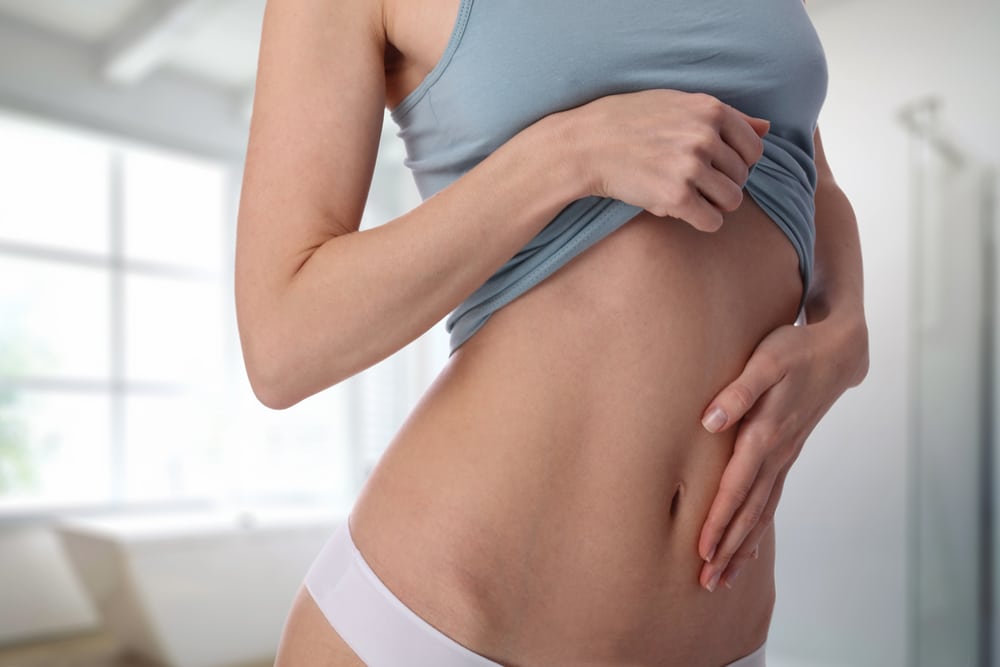
When is BodyTite Better Than Liposuction?
The number of body contouring options on the market never seems to stop growing. With the addition of new techniques comes a host of terms and jargon that can feel impossible to translate. When the flurry of “ultrasounds,” “radio waves” and “non-invasives” overwhelms...

Liposuction Under Local Anesthesia: 10 Things You Should Know
Insights from Chicago’s Leader in Local Anesthesia Liposuction Dr. John Q. Cook, the founder and director of the Whole Beauty® Institute in Chicago and Winnetka, has performed a variety of liposuction techniques under local anesthesia for many years. Current...
Plastic Surgery During the Summer Months
At first thought, plastic surgery during the summer months doesn't seem like the ideal time of year. People are mostly headed outdoors to swim, run, bike, and explore. However, more important than the time of year is the amount of time you have to recover from...
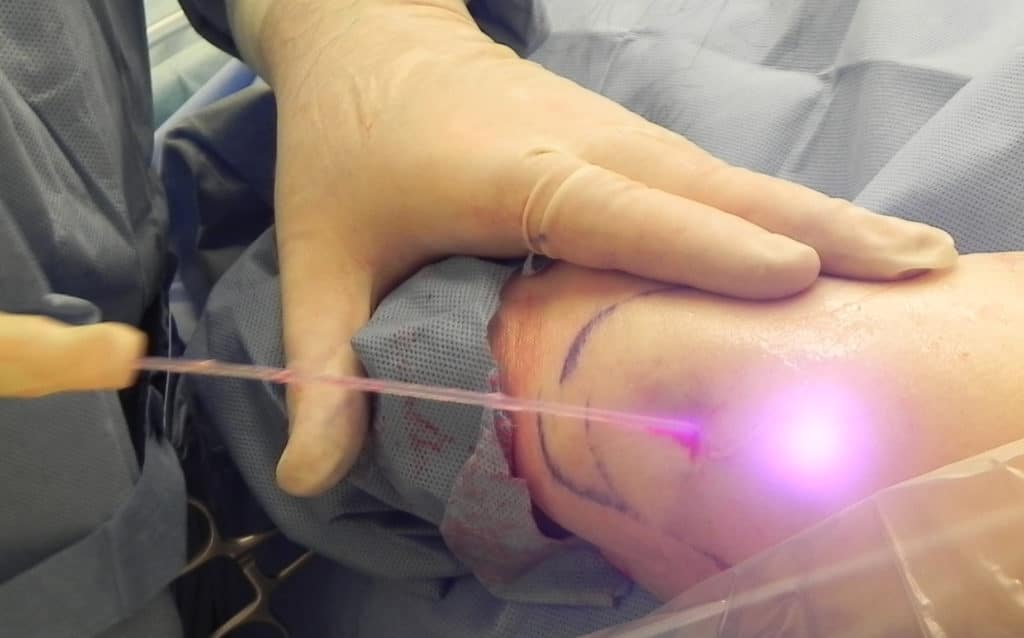
Smartlipo® and Slimlipo® Laser Liposuction Advantages
Smartlipo® and Slimlipo® laser liposuction advantages over other liposuction techniques, such as classical liposuction and ultrasonic liposuction.

Laser Liposuction for Athletes
We offer laser liposuction with the SlimLipo® device under local anesthesia in our Chicago and Winnetka offices. In general patients can return to exercise much more quickly than with other techniques. This makes laser liposuction particularly attractive to athletes, who do not want to disrupt their training schedules.
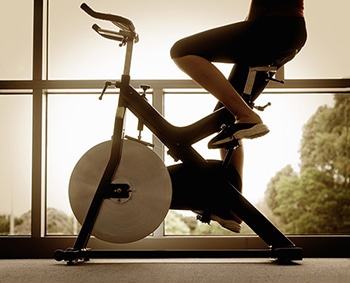
Why liposuction can enhance fitness and health
A significant number of people exercise in order to improve or maintain their body shape and to keep their weight within a desired range. As a person loses weight due to increased exercise a desirable feedback cycle is established. When your clothes fit better, you feel good about your appearance, and you are likely to want to continue exercising.
Liposuction and Loose Skin
There is a persistent myth that I would like to dispel – that there is a way to significantly tighten loose skin involving a technique of liposuction. The ideal candidate for liposuction is a person who is relatively young with good skin tone and localized fat deposits and who has good personal habits of nutrition and exercise.
Dr. Cook's Practice Blog
Explore our practice blog to learn more about non-surgical treatments and plastic surgery procedures available at The Whole Beauty® Institute. Get tips and advice, and discover new ways to improve your health and beauty.
Dr. Cook's HealthGems Blog
Dr. John Q. Cook shares his personal thoughts on well-being, quality of life, and more in HealthGems—from his decades of experience in the industry, studying and working with advanced technology and techniques.
Whole Beauty Skincare
SkinShopMD.com was created by Board-Certified plastic surgeon, Dr. John Q. Cook, as a trusted source for high quality, medical-grade skincare products to protect and rejuvenate your skin.
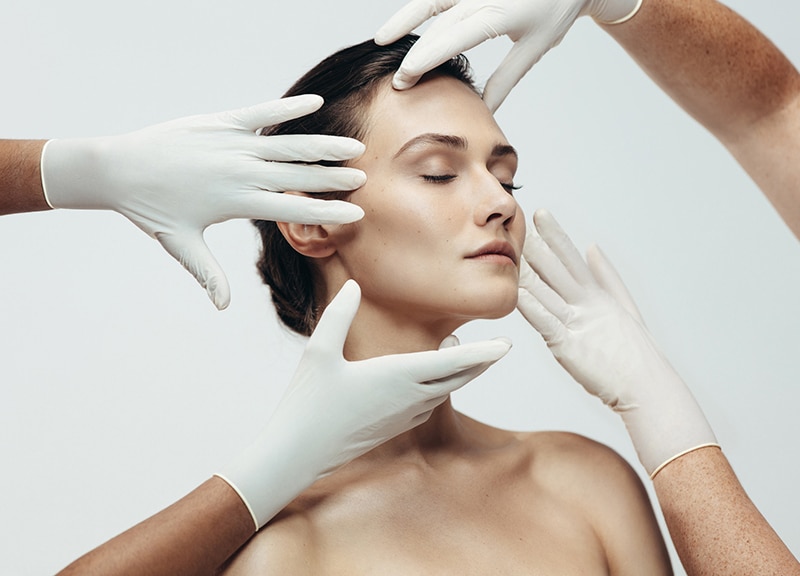
Educational Information
Get informed about cosmetic plastic surgery procedures and rejuvenating non-surgical treatments to help you make informed decisions about your desired treatment based on your aesthetic goals.
Testimonial and Practice Videos
Schedule a Consultation
Schedule a consultation with board-certified plastic surgeon, John Q. Cook, M.D., to learn more about plastic surgery solutions that may be right for you based on your aesthetic goals.
"*" indicates required fields
Our Office Locations
Our locations in the Gold Coast of Chicago and Winnetka in the North Shore reflect our commitment to convenient and discrete concierge-level service.
Chicago Office
737 North Michigan Ave., Suite 760 Chicago IL 60611 (312) 751-2112 Entrance at 151 E. Chicago Avenue
Winnetka Office
118 Green Bay Road Winnetka IL 60093 (847) 446-7562
Located directly across from Indian Hill Metra Station






